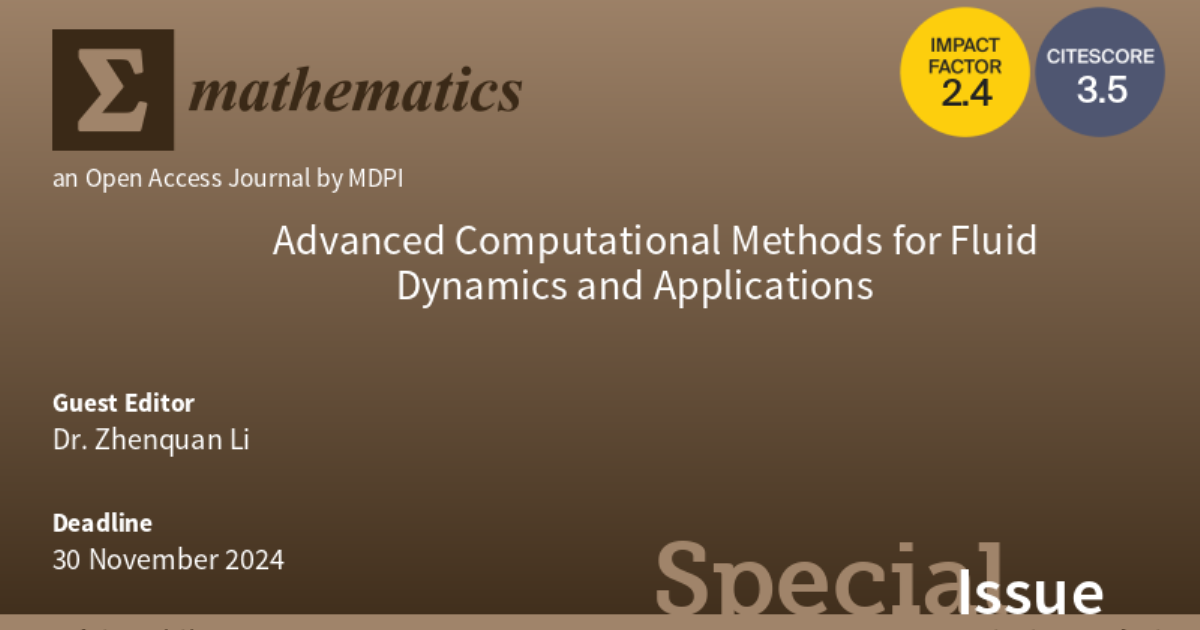Advanced Computational Methods for Fluid Dynamics and Applications
A special issue of Mathematics (ISSN 2227-7390). This special issue belongs to the section "Computational and Applied Mathematics".
Deadline for manuscript submissions: 30 November 2024 | Viewed by 2648

Special Issue Editor
Special Issue Information
Dear Colleagues,
Fluid flows are commonplace; however, we still cannot solve most fluid mechanical problems without the use of computational methods. Over the last thirty years, there have been significant progresses in computational methods for fluid flow. This Special Issue presents the recent achievements in the area.
Any theoretical research and practical applications in computational methods for fluid flows are welcome. The topics may include mesh generation, numerical methods for the mathematical models in fluid dynamics, experimental studies showing the validity of computational methods for fluid flows, and numerical simulations of fluid flows.
Dr. Zhenquan Li
Guest Editor
Manuscript Submission Information
Manuscripts should be submitted online at www.mdpi.com by registering and logging in to this website. Once you are registered, click here to go to the submission form. Manuscripts can be submitted until the deadline. All submissions that pass pre-check are peer-reviewed. Accepted papers will be published continuously in the journal (as soon as accepted) and will be listed together on the special issue website. Research articles, review articles as well as short communications are invited. For planned papers, a title and short abstract (about 100 words) can be sent to the Editorial Office for announcement on this website.
Submitted manuscripts should not have been published previously, nor be under consideration for publication elsewhere (except conference proceedings papers). All manuscripts are thoroughly refereed through a single-blind peer-review process. A guide for authors and other relevant information for submission of manuscripts is available on the Instructions for Authors page. Mathematics is an international peer-reviewed open access semimonthly journal published by MDPI.
Please visit the Instructions for Authors page before submitting a manuscript. The Article Processing Charge (APC) for publication in this open access journal is 2600 CHF (Swiss Francs). Submitted papers should be well formatted and use good English. Authors may use MDPI's English editing service prior to publication or during author revisions.
Keywords
- computational methods for fluid flow
- numerical simulation of fluid flow
- mathematical modelling





